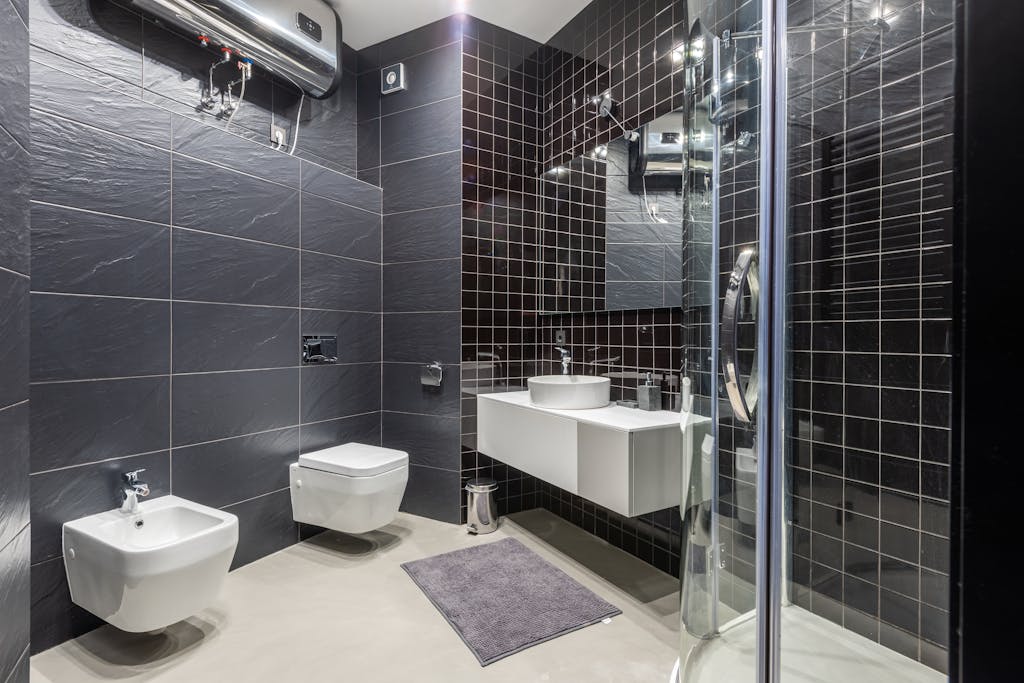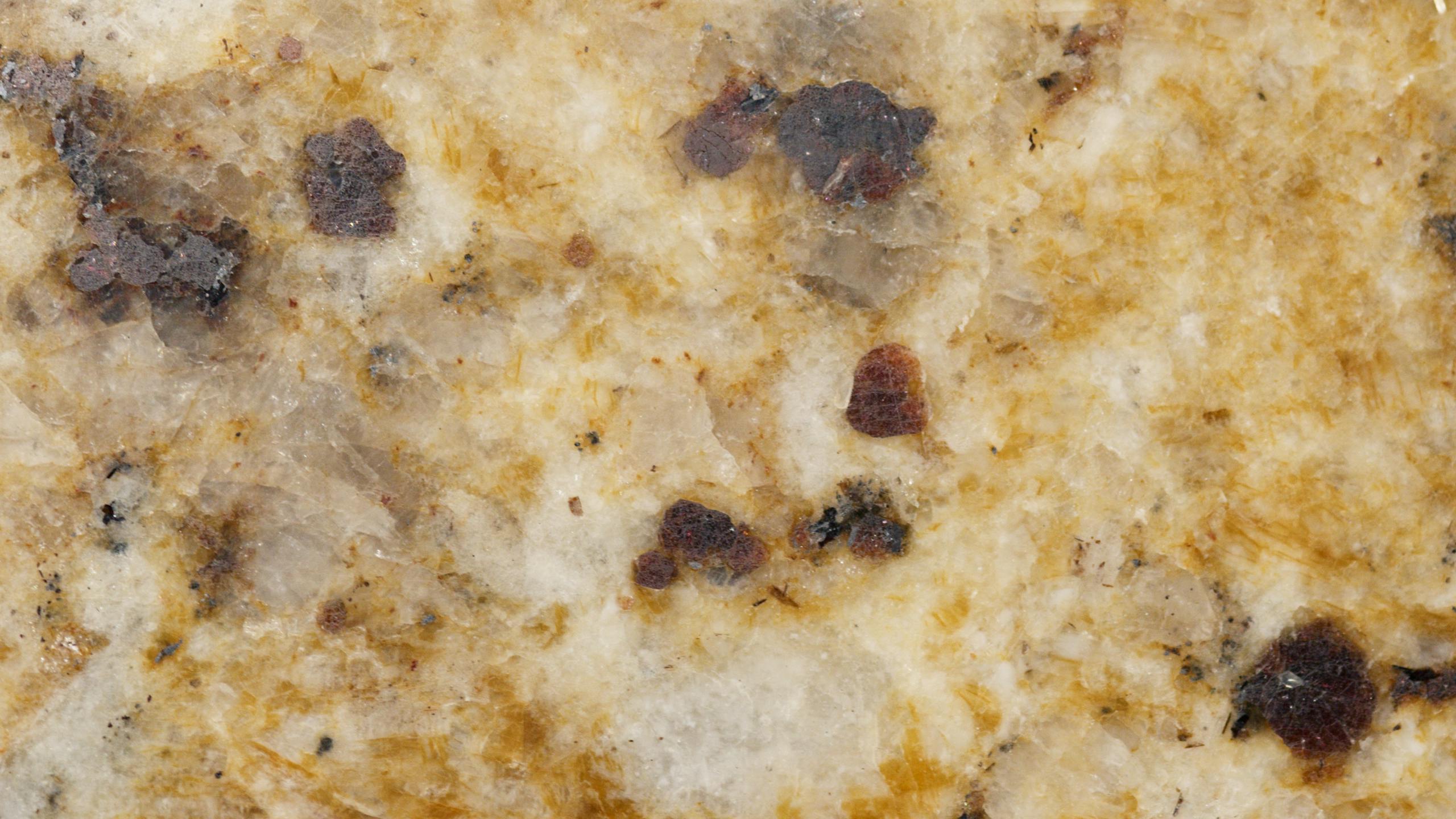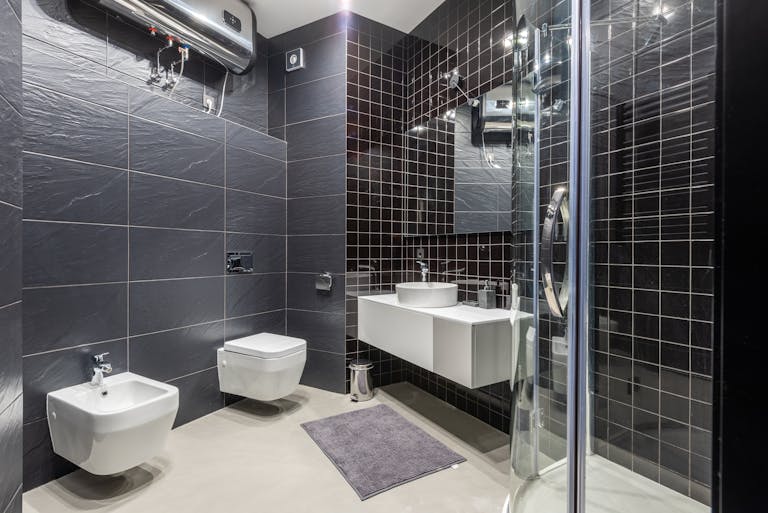Mold Risks in Poorly Ventilated Spaces: How to Prevent and Manage It
Mold is a silent threat that can cause significant damage to your home and health, especially in poorly ventilated spaces. If your bathroom, basement, or kitchen lacks proper airflow, it could be an ideal environment for mold to thrive. Mold grows in damp, humid conditions and often goes unnoticed until it has spread, causing damage to walls, floors, and furniture, and posing serious health risks to residents.
In this article, we’ll explore why mold thrives in poorly ventilated spaces, the health risks associated with mold exposure, and practical tips on preventing and managing mold growth in your home. Whether you’re dealing with a musty basement or a bathroom with persistent moisture, understanding how ventilation impacts mold growth is key to keeping your home safe and healthy.
Why Mold Risks Thrives in Poorly Ventilated Spaces
Mold needs moisture to grow. When there’s insufficient ventilation in a space, the moisture from everyday activities such as showering, cooking, or washing dishes lingers in the air and on surfaces. Poor ventilation traps this moisture, which creates a perfect breeding ground for mold spores to settle and begin growing.
How Moisture and Humidity Contribute to Mold Growth
Mold thrives in environments with high humidity, typically between 60% and 80%. In poorly ventilated spaces, humidity levels can easily rise, particularly in areas with water usage like bathrooms or kitchens. When warm, moist air is not properly ventilated, it condenses on colder surfaces like walls, ceilings, and floors, creating moisture buildup. This moisture combined with stagnant air provides the ideal conditions for mold to take hold.
Without proper airflow to remove this moisture, mold spores can colonize and spread, often causing damage to materials like wood, drywall, and insulation. Over time, untreated mold can weaken structural elements in your home, creating more significant issues.
The Role of Poor Ventilation in Trapping Moisture
In poorly ventilated areas, the moisture doesn’t have the opportunity to dissipate. Many bathrooms or basements are closed off with little to no airflow. This lack of ventilation traps moisture from showers, baths, and even the smallest amounts of condensation from sinks or bathtubs. Similarly, kitchens without adequate exhaust fans can allow moisture from cooking to linger, creating an environment where mold thrives.
Unlike other areas of the home, these spaces often have limited natural airflow, making it more difficult for air to circulate and remove excess moisture. Without sufficient airflow, mold can grow rapidly and cause long-term issues.
The Science Behind Mold Growth
Mold spores are present everywhere in the air, on surfaces, and even in dust. While spores are harmless in their dormant state, they only need moisture to become active and begin growing. Once moisture accumulates in a poorly ventilated space, it creates the perfect environment for these spores to take root and develop into mold colonies.
Mold Spores and Their Survival Conditions
Mold spores require moisture, organic material (such as wood, paper, or fabric), and a suitable temperature (typically between 60°F and 80°F) to survive. Poor ventilation creates an environment where moisture can linger for long periods, allowing the spores to become active and begin their growth cycle. Once mold colonies form, they can spread quickly, releasing new spores into the air and continuing the cycle.
In poorly ventilated spaces, the temperature fluctuations like those caused by warm, steamy air from a shower can increase the likelihood of condensation, providing even more moisture for mold to thrive.
Common Areas at Risk for Mold Due to Poor Ventilation
Certain areas of the home are more prone to mold growth due to poor ventilation. Bathrooms, basements, and kitchens are particularly susceptible because they often have high moisture levels from regular activities like showering, cooking, or washing dishes. If these spaces are not properly ventilated, moisture can build up, leading to mold growth and potential damage to surfaces, walls, and structural components.
Bathrooms: Showers, Tubs, and Sinks Creating Ideal Mold Conditions
Bathrooms are one of the most common areas for mold growth, particularly around showers, tubs, and sinks. Showers produce significant moisture, and without proper ventilation, that moisture lingers in the air and on bathroom surfaces. Water often accumulates on the walls, floors, and ceilings, creating the perfect environment for mold to thrive.
In bathrooms with inadequate airflow, mold can grow in hidden corners, behind the shower curtain, or under the sink, where moisture often gets trapped. Tiles and grout lines are especially vulnerable to mold buildup, as moisture can seep into the porous surface.
Basements: High Humidity and Lack of Airflow
Basements are another prime location for mold growth, particularly if they are poorly ventilated or have high humidity levels. Basements often lack sufficient windows and airflow, and they tend to be cooler and more humid than other parts of the home. This combination of conditions allows moisture to accumulate in the air, on floors, and in walls, creating a conducive environment for mold.
In areas of the basement prone to flooding or high water tables, mold is even more likely to develop. It can grow on wood, drywall, and insulation, damaging the integrity of the space. Without proper ventilation and dehumidification, mold can spread rapidly in basements, leading to costly repairs.
Kitchens: Moisture Buildup from Cooking and Washing Dishes
While kitchens are designed to handle moisture, poor ventilation can lead to mold growth. Cooking generates steam, which can increase humidity levels in the room. If the kitchen lacks an exhaust fan or proper ventilation system, moisture will linger in the air and on surfaces, leading to mold buildup.
Dishwashing also contributes to high humidity levels, especially if the sink area is poorly ventilated. Water splashes and damp sponges or towels can provide a steady source of moisture for mold to grow. If the kitchen doesn’t have proper airflow, these moisture levels can persist, encouraging mold growth in hidden corners and on cabinets, especially under the sink.
Health Risks Associated with Mold Exposure
Exposure to mold, especially in poorly ventilated spaces, can have serious health consequences. Mold spores can trigger a variety of respiratory issues and allergies, making it a significant concern for anyone living in a mold-prone home. The severity of mold-related health risks depends on the type of mold, the extent of exposure, and the individual’s sensitivity.
Respiratory Issues: Asthma, Allergies, and Other Health Concerns
One of the most common health risks associated with mold exposure is respiratory problems. Mold spores can be inhaled, leading to asthma attacks, allergic reactions, or other respiratory issues. Individuals with pre-existing conditions like asthma or those who are sensitive to allergens may experience more severe symptoms when exposed to mold.
Common symptoms of mold exposure include coughing, wheezing, nasal congestion, throat irritation, and eye irritation. In severe cases, long-term exposure to mold can lead to chronic respiratory problems and even lung infections.
Mold-Related Illnesses and Sensitivities
Some types of mold, such as black mold (Stachybotrys chartarum), can produce mycotoxins that are toxic to humans. Prolonged exposure to these toxic molds can cause more severe health issues, including headaches, fatigue, skin rashes, and neurological symptoms. While most people are not affected by low levels of mold, those with weakened immune systems, the elderly, or young children may be more vulnerable to mold-related illnesses.
It’s important to address mold growth promptly to minimize health risks, especially in homes with sensitive individuals.
The Impact of Mold on Children, Elderly, and Immune-Compromised Individuals
Children, elderly individuals, and those with weakened immune systems are particularly susceptible to mold-related health problems. Children may experience more pronounced allergic reactions or respiratory issues due to their developing immune systems. Elderly individuals, on the other hand, may have weakened immune systems, making them more prone to infections caused by mold exposure.
For individuals with immune system disorders, mold can worsen their condition, leading to chronic illness or infections. For this reason, it’s critical to address mold problems quickly, especially in households with vulnerable members.
How Poor Ventilation Contributes to Mold Growth
Proper ventilation is key to controlling moisture levels and preventing mold growth. Without adequate airflow, the moisture generated by everyday activities such as showering, cooking, or washing dishes has nowhere to escape. This trapped moisture leads to increased humidity, creating the perfect breeding ground for mold spores to thrive.
The Lack of Airflow Traps Moisture
In poorly ventilated spaces, the air doesn’t circulate properly. When moisture accumulates on surfaces like walls, ceilings, and floors, it has nowhere to go. This trapped moisture can seep into porous materials, like drywall, wood, and insulation, providing the perfect environment for mold to grow.
In bathrooms, for instance, steam from hot showers can increase the humidity level. Without proper exhaust fans or ventilation systems, this moisture stays in the air and on surfaces, turning your bathroom into an ideal mold-growing environment. Similarly, in kitchens and basements, moisture from cooking, washing dishes, or even groundwater seepage can accumulate in the air and create a persistent mold risk.
Temperature Fluctuations Creating Condensation
Temperature fluctuations can also contribute to mold growth in poorly ventilated spaces. Warm, humid air in bathrooms or kitchens can come into contact with colder surfaces like windows, pipes, or walls, leading to condensation. This moisture then drips down and collects on surfaces, providing a constant source of water for mold spores to colonize.
In poorly ventilated areas, condensation isn’t cleared away quickly, allowing moisture to build up and stay trapped. Over time, this can cause mold to grow on walls, ceilings, and even on insulation behind walls, creating significant problems that can be costly to fix.
Insufficient Exhaust Systems or Window Placements
Exhaust fans are designed to pull humid air out of bathrooms, kitchens, and other moisture-prone areas. However, many bathrooms, especially older homes, may not have adequate exhaust fans, or they may not be powerful enough to effectively remove moisture. Similarly, basements and kitchens often lack sufficient ventilation systems or windows to provide airflow.
Without proper ventilation, the humid air stays trapped inside, further exacerbating the issue of mold growth. It’s essential to ensure that your home has proper exhaust systems in high-moisture areas to keep the air circulating and prevent mold from forming.
Preventing Mold Growth in Poorly Ventilated Spaces
The good news is that mold growth is preventable. By addressing ventilation issues and reducing moisture in the home, you can significantly lower the risk of mold developing. Here are some practical tips for preventing mold in poorly ventilated spaces:
Improving Ventilation Through Exhaust Fans and Windows
One of the most effective ways to prevent mold growth is to improve airflow in high-moisture areas. Installing or upgrading exhaust fans in the bathroom and kitchen can help remove excess humidity from the air. Make sure the exhaust fan is appropriately sized for the room and vents outside to prevent moisture from circulating back into the home.
In addition to exhaust fans, make sure to open windows regularly, particularly in rooms like bathrooms and kitchens, to allow fresh air to flow through and reduce humidity levels. Even if you can’t install new windows, consider using a dehumidifier or installing a ventilation system that ensures constant airflow.
Dehumidifiers to Reduce Moisture Levels
In areas like basements or rooms with poor natural ventilation, using a dehumidifier can be an effective way to reduce moisture and prevent mold. Dehumidifiers work by removing moisture from the air, helping to maintain humidity levels between 30% and 50%, which is ideal for mold prevention.
A dehumidifier can be particularly useful in spaces like basements, where the air tends to be damp and humid. Keep in mind that the dehumidifier will need to be emptied regularly, and filters should be cleaned to ensure the unit is working effectively.
Proper Insulation to Maintain Consistent Temperature and Airflow
Proper insulation is essential for maintaining a consistent temperature and preventing condensation. Ensure that pipes, walls, and ceilings are insulated to prevent moisture from accumulating on cold surfaces. In poorly ventilated spaces, condensation often forms when warm, humid air meets cold surfaces, so insulation helps to maintain a more consistent temperature and airflow.
Additionally, consider installing vapor barriers in areas like the basement, where moisture can seep through walls or floors. Vapor barriers prevent moisture from entering the space, reducing the likelihood of mold growth.
Regular Cleaning and Maintenance to Prevent Mold Buildup
Regular cleaning and maintenance are key to preventing mold from taking root. In bathrooms and kitchens, wipe down surfaces frequently to remove excess moisture, especially after showers or cooking. Pay close attention to areas prone to mold, such as grout lines, window sills, and behind toilets or sinks.
Ensure that your exhaust fans, dehumidifiers, and HVAC systems are working properly. Clean filters and ducts regularly to maintain efficient airflow. Check for any water leaks or plumbing issues that could contribute to excess moisture in the home, and address these problems promptly.
Mold Remediation: How to Get Rid of Mold in Poorly Ventilated Spaces
If mold has already taken hold in your home, it’s important to address the issue immediately to prevent further damage and potential health risks. Mold removal can be a straightforward DIY task for small areas, but for larger infestations, professional remediation may be necessary.
Identifying Signs of Mold in Hidden Areas
Mold can grow in hidden areas, such as behind walls, under floors, or in basements, making it difficult to detect. Be on the lookout for signs of mold growth, such as musty odors, water stains, or visible patches of mold on surfaces. If you notice any of these signs, it’s important to inspect the area thoroughly and take action quickly.
If you suspect mold growth in hidden areas, consider hiring a professional mold inspector to assess the situation and determine the best course of action.
DIY Mold Removal vs. Professional Remediation
For small mold problems, you can clean affected areas yourself using a mixture of water and soap, or a commercial mold cleaner. Wear protective gear like gloves, a mask, and goggles, and be sure to ventilate the area properly while cleaning.
For larger mold infestations, professional mold remediation is recommended. Mold removal experts have the necessary tools, experience, and safety protocols to safely remove mold and prevent it from returning. They can also address the underlying moisture issue that’s contributing to mold growth.

Conclusion: Mold Prevention in Poorly Ventilated Spaces
Mold in poorly ventilated spaces is a serious issue that can affect both the health of your home and your family. Proper ventilation, moisture control, and regular maintenance are key to preventing mold growth. If mold has already formed, it’s crucial to address the issue immediately to minimize damage and protect your health.
By improving ventilation, using dehumidifiers, insulating key areas, and keeping your home clean and dry, you can significantly reduce the risk of mold growth in poorly ventilated spaces. Taking preventive measures now will save you time, money, and stress in the long run.
Contact Us for a Free Consultation
If you’re concerned about mold risks in your home or need help improving ventilation and moisture control, we’re here to help. Our team specializes in mold prevention, remediation, and home ventilation solutions. Contact us today for a free consultation, and let’s ensure your home stays mold-free and safe.







